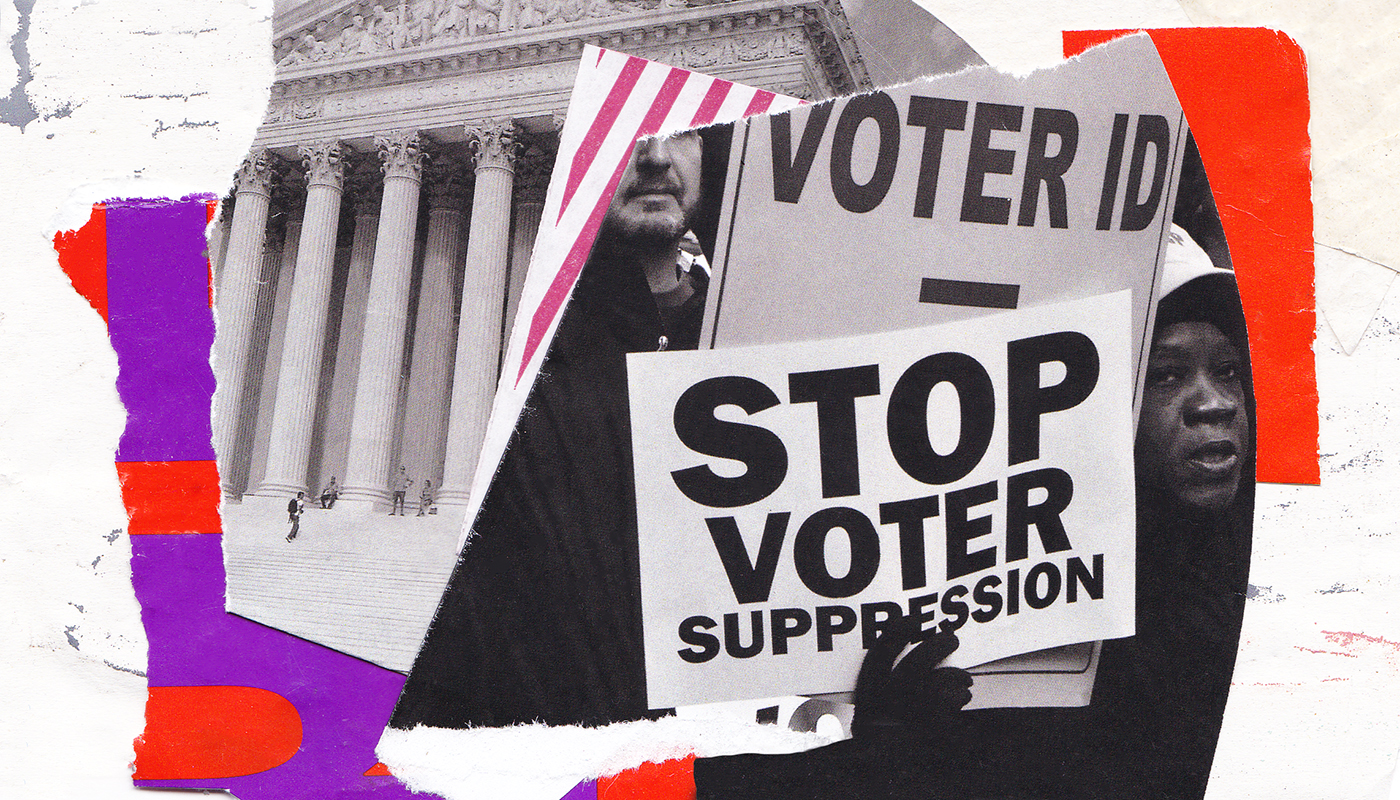Click here for the latest research on the ruling’s impact on the right to vote >>
The Voting Rights Act inaugurated a new era of democracy in the United States. Nearly a century after the Fifteenth Amendment was ratified, Congress finally put teeth into its promise that no citizen could be denied the right to vote based on race.
The VRA has been among the most successful pieces of federal legislation in the history of the country. To take just one example, in the twenty years following the law’s passage, the disparity in registration rates between white and black registration rates dropped from nearly 30 percentage points in the early 1960s to eight just a decade later. Based on this success, the VRA has been reauthorized multiple times—most recently, in 2006. The latest reauthorization passed both chambers of Congress with deep bipartisan support – passing unanimously in the Senate – and it was signed by George W. Bush.
At the center of the VRA’s success was Section 4 – commonly referred to as the coverage formula. The coverage formula determined which jurisdictions had to “preclear” changes to their election rules with the federal government before implementing them, based on their history of race-based voter discrimination. Preclearance was massively successful at improving voting access in covered jurisdictions.
In 2013, however, the Supreme Court struck down the coverage formula in a case called Shelby County v. Holder. In a 5–4 decision, the Court reasoned that the coverage formula was out of date – despite Congress’s determination that it was still needed. The ruling rendered the Section 5 preclearance system effectively inoperable.
The decision in Shelby County opened the floodgates to laws restricting voting throughout the United States. The effects were immediate. Within 24 hours of the ruling, Texas announced that it would implement a strict photo ID law. Two other states, Mississippi and Alabama, also began to enforce photo ID laws that had previously been barred because of federal preclearance.
The Brennan Center for Justice has consistently found that states previously covered by the preclearance requirement have engaged in recent, significant efforts to disenfranchise voters. A 2018 Brennan Center report concluded that previously covered states have purged voters off their rolls at a significantly higher rate than non-covered jurisdictions. Our 2018 State of Voting Report found that previously covered states have enacted a series of laws and others measures that restrict voting since Shelby County ended preclearance.
Texas
In July 2011, then-Texas Governor Rick Perry signed SB 14 into law. The law greatly restricted the forms of acceptable IDs voters had to present to cast a ballot. Now, voters were compelled to present an unexpired photo ID from a list of seven acceptable documents. Experts estimated that over 600,000 registered Texas voters did not have an acceptable ID under the new law.
Under Section 5 requirements, Texas filed a federal lawsuit seeking preclearance to enforce SB 14. The Brennan Center and co-counsel represented the Texas NAACP and the Mexican American Legislative Counsel (MALC) in opposition in the case Texas v. Holder. In August 2012, the U.S. District Court for the District of Columbia rejected the law on the grounds that Texas was unable to prove that SB 14 law would not discriminate against African-American and Latino voters.
Within hours of the Shelby County decision, Texas Attorney General Greg Abbott said in a statement, “With today’s decision, the State’s voter ID law will take effect immediately. Redistricting maps passed by the Legislature may also take effect without approval from the federal government.” In response, the Brennan Center alongside partners at the Lawyers Committee for Civil Rights, the NAACP, Jose Garza, Robert Notzon, Gary Bledsoe, and Clay Bonilla filed a complaint on behalf of the NAACP of Texas and MALC in September 2013. The complaint in NAACP v. Steen argued that SB 14 violated Section 2 of the Voting Rights Act, a provision not affected by the Shelby County decision.
The litigation in Steen was ultimately successful in stopping SB 14 after the Fifth Circuit upheld a District Court ruling that the law violates the VRA and the Constitution. However, after Texas passed a new law, SB 5, the Fifth Circuit upheld Texas’s new law in the subsequent case Veasey v. Abbott and allowed the state to implement SB 5.
North Carolina
Less than two months after Shelby County, North Carolina enacted a far-reaching and pernicious voting bill. HB 589 instituted a strict photo ID requirement; curtailed early voting; eliminated same day registration; restricted pre-registration; ended annual voter registration drives; and eliminated the authority of county boards of elections to keep polls open for an additional hour. The litany of restrictions in this bill is possibly the most restrictive bill passed after the collapse of Section 5 protections due to Shelby County.
The bill was initially set to be a narrower photo ID requirement. After Shelby County, however, North Carolina legislative leaders expanded the scope of the bill to become much more comprehensive in rolling back access to democracy.
Immediately, the Department of Justice, the North Carolina State Conference of the NAACP, the League of Women Voters, and other affected groups and individuals sued the state. The Brennan Center for Justice submitted an amicus brief in support of the plaintiffs in the case NAACP v. McCrory.
The U.S. Court of Appeals for the Fourth Circuit struck down the law in July 2016, finding that it targeted “African Americans with almost surgical precision.” The court ruled that HB 589 violated Section 2 of the Voting Rights Act and the Constitution. On May 15, 2017, the Supreme Court denied North Carolina’s petition for writ of certiorari.



